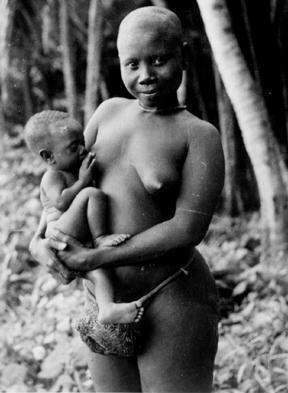 | ||
The Onge (also Önge, Ongee, and Öñge) are one of the Andamanese indigenous peoples of the Andaman Islands. Traditionally hunter-gatherers, they are a designated Scheduled Tribe of India.
Contents
History
In the 18th century the Onge were distributed across Little Andaman Island and the nearby islands, with some territory and camps established on Rutland Island and the southern tip of South Andaman Island. After encounter with British colonial officers, friendly relations were established with the British Empire in the 1800s, through Lieutenant Archibald Blair. British naval officer M. V. Portman described them as the "mildest, most timid, and inoffensive" group of Andamanese people he had encountered. By the end of the 19th century they sometimes visited the South and North Brother Islands to catch sea turtles; at the time, those islands seemed to be the limit between their territory and the range of the Great Andamanese people further north. Today, the surviving members (fewer than 100) are confined to two reserve camps on Little Andaman, Dugong Creek in the northeast and South Bay.
The Onge were semi-nomadic and used to be fully dependent on hunting and gathering for food.
The Onge are one of the indigenous people of Andaman Islands. Together with the other Andamanese tribes and a few other isolated groups elsewhere in South Asia and Southeast Asia, they comprise the Negrito peoples, believed to be remnants of a very early migration out of Africa.
Population
Onge population numbers were substantially reduced in the aftermath of colonisation and settlement, from 672 in 1901 to barely 100.
A major cause of the decline in Onge population is the changes in their food habits brought about by their contact with the outside world. The Onge are one of the least fertile and most sterile people in the world. About 40% of the married couples are sterile. Onge women rarely become pregnant before the age of 28. Infant and child mortality is in the range of 40%. The net reproductive index for the Onge is 0.91. For comparison, the net reproductive index among the Great Andamanese is 1.40.
In 1901, there were 672 Onge; 631 in 1911, 346 in 1921, 250 in 1931, and 150 in 1951.
Tsunami
The semi-nomadic Onge have a traditional story that tells of the ground shaking and a great wall of water destroying the land. Taking heed of this story, all 96 tribesmen of the semi-nomadic Onge survived the tsunami caused by the 2004 Indian Ocean earthquake, by taking shelter in the highlands.
Poisoning incident
In December 2008, eight male tribal members died after drinking a toxic liquid – identified as methanol by some sources – that they had apparently mistaken for drinking alcohol. The toxic liquid apparently came from a container or bottle that had been washed ashore at Dugong Creek near their settlement on the island, according to reports; however, authorities in Port Blair ordered an investigation into the matter to determine whether the poison had originated somewhere else. A further 15 Onge were taken to hospital with at least one critically ill.
With their population estimated at only around 100 before the incident, the director of Survival International described the mass poisoning as a "calamity for the Onge", and warned that any more deaths could "put the survival of the entire tribe in serious danger." Alcohol and alcohol addiction has in recent years developed into a serious problem for Onge, adding to the threats to their continued survival posed by outside influences.
Bhopinder Singh, the Lieutenant Governor of the Andaman Islands, has ordered an inquiry into the incident.
Language
The Onge speak the Önge language. It is one of two known Ongan languages (South Andamanese languages). Önge used to be spoken throughout Little Andaman as well as in smaller islands to the north, and possibly in the southern tip of South Andaman island. Since the middle of the 19th century, with the arrival of the British in the Andamans, and, after Indian independence, the massive inflow of Indian settlers from the mainland, the number of Onge speakers has steadily declined. However, a moderate increase has been observed in recent years. As of 2006, there were 94 Onge speakers confined to a single settlement in the northeast of Little Andaman Island (see map above), making it an endangered language.
Genetics
The Andamanese are believed to represent the original migrations which, about 60,000 years ago, brought the first modern humans out of Africa to the Andaman Islands. Analysis of mtDNA, which is inherited exclusively by maternal descent, confirms the above results. There were mutations here that are found nowhere else in the world. All Onge belong to M32 mtDNA, subgroup of M which is unique to Onge people. While parental Y-DNA is exclusively Haplogroup D.
According to the genome-wide study in 2009, Andamanese split from mainland Asia around 48,500 years ago All Onge belong to MtDNA M and Y-DNA Haplogroup D A 2017 study suggests that the Onge are derived from a lineage that trifurcated from East Asians and Australasians in ancient time.
